
There’s a certain section of all the grocery stores here in Grenada that has a particularly pungent smell. If you follow the scent, it’ll lead you to a back corner where you’ll find an assortment of salted meats – salted fish, salted pig snouts, and different varieties of salted pork. My sister and I have always had a love and fascination for cured meats, whether it’s prosciutto from Italy, nem from Vietnam, or iberico from Spain. So when I stumbled upon some salted pork in Grenada, I knew I had to try it.
Granted, it definitely didn’t look like the kind you’d snack on with a glass of wine or with some cheese. But I was certain that it’d impart some yummy flavors to any dish that it was part of. So I threw a pack of salted pork riblets into my cart and continued on to the produce aisle. As I continued my shopping, a store clerk started chatting with me and asked me what I was making with my salted pork. I confessed, I didn’t yet know. He suggested a pumpkin soup and proceeded to give me step by step instructions on how to prepare the pork, which was confirmed by an elderly lady passing by — who, I might add, preceded her comments with “Let me tell you how to make it. I am a woman.” :)
So I came home with the pumpkin and salted pork in hand and looked through a few more recipes online. I ended up combining their suggestions with a recipe that I adapted from Hank Shaw’s recipe here. The key differences include the use of pumpkin rather than butternut squash, and substituting salt pork for bacon.
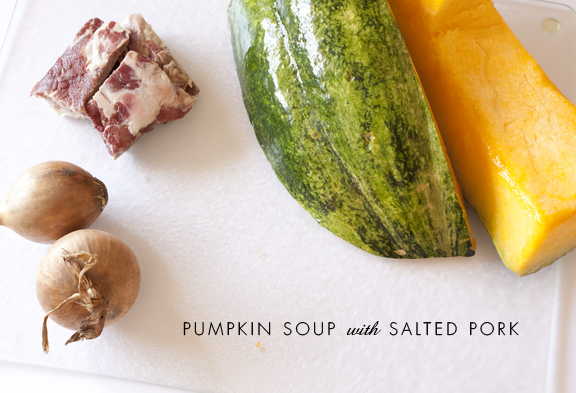
Pumpkin Soup with Salted Pork
Serves 4–6
I had some chicken stock left over that I had made previously with a whole chicken and some fresh thyme thrown in. The thyme adds an extra layer of complexity to the soup, so if you’d like some in your soup as well, you can feel free to throw in some fresh thyme or other fresh herbs as well.
If you’re not able to find salted pork, you can always salt your own. Any cut of pork will do, but riblets are a favorite because they have a bit of fat that flavors the soup and they’re fun to nibble on later. You can go hardcore and make “real” salt pork (takes two weeks) or just cover a piece of pork with salt and throw it in the fridge overnight. If you do the latter, you can probably get by with just rinsing the salt off. Don’t boil it before you add it into the soup or it’ll lose all its flavors and saltiness.
The traditional West Indian version of this soup sometimes includes chopped cabbage leaves. Alternatively, you can also leave out the pork riblets and season the soup with cloves, nutmeg, and some cinnamon. Chilled, this would make a refreshing soup for a summer day! This version is more heavy and substantial, which I find works nicely as a full meal with some crusty bread.
3 lbs West Indian pumpkin (also called Calabaza, but feel free to substitute with butternut squash)
3/4 lb salted pork riblets
2 small onions, diced
4 cloves garlic, minced
5 bay leaves
1 1/2 quarts chicken stock
2 Tbsp oil
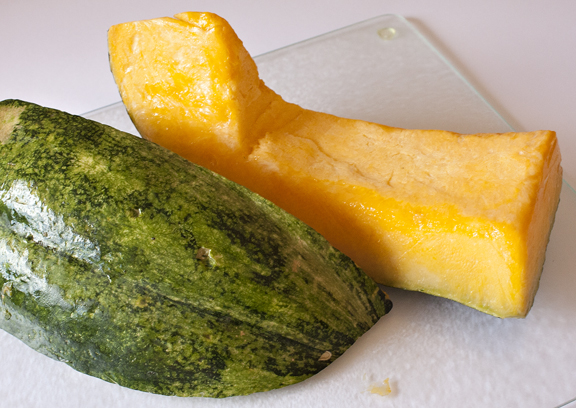

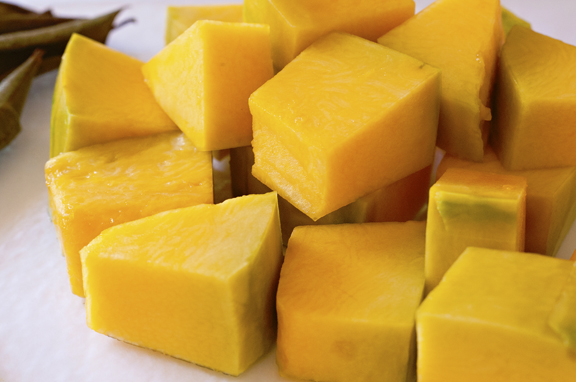
1. Rinse pork riblets to wash off all the extra salt.
2. Put some water in a small pot and bring to a boil. Put the pork riblets into the water and let it boil for about 5 minutes.
3. Discard the water, rinse pork riblets, and repeat one more time. Set pork aside.
4. In a large stock pot, sautee the garlic and onions in oil over medium-high heat.
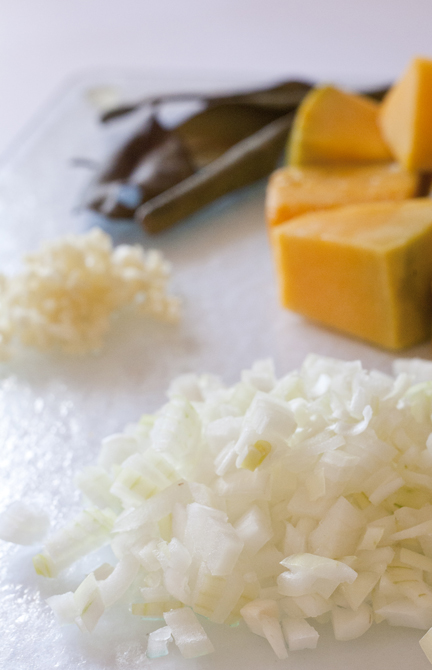
5. When the garlic and onions have browned, add in the chicken stock, pumpkin, bay leaves, and pork. Bring the mixture a boil and reduce heat to let it simmer softly. Simmer for at least an hour or until the pumpkin has broken down.
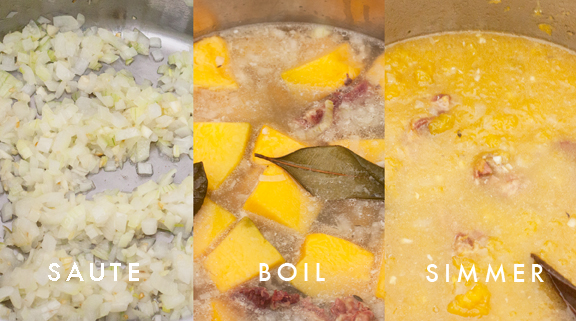
6. Remove pork riblets and bay leaves. Puree the soup.
7. Garnish with fresh herbs and a swirl of heavy cream or coconut milk.
Enjoy!




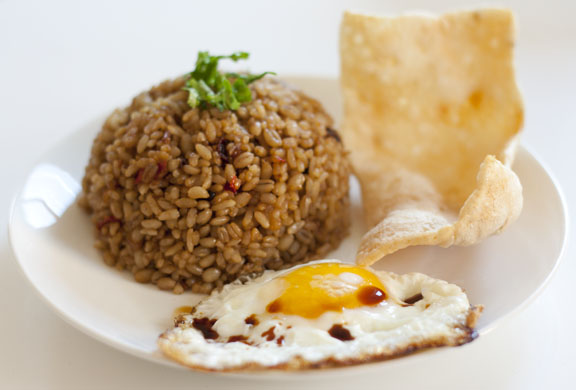

















Connect with us